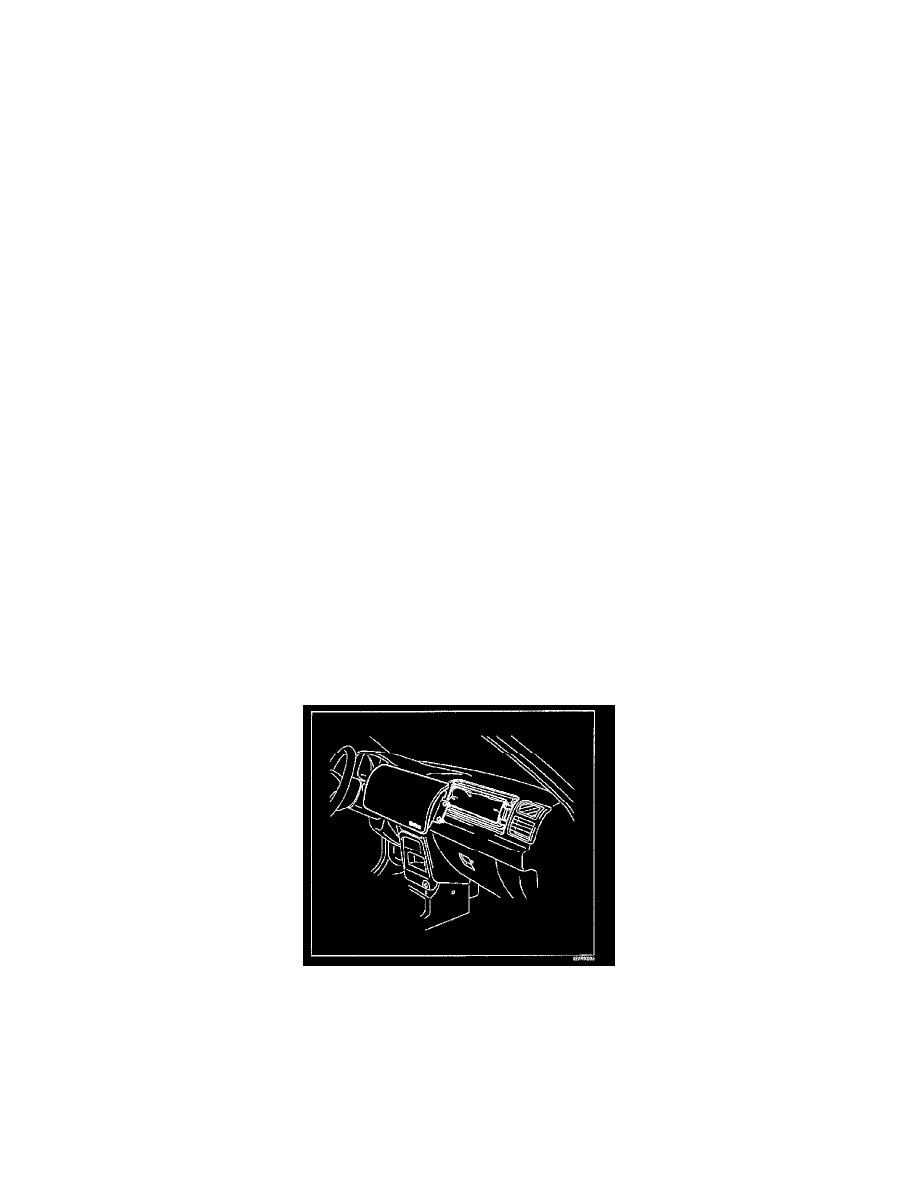Rodeo LS 4WD V6-3.2L (1998)

of the deployment reaction. The sodium hydroxide then quickly reacts with atmospheric moisture and is converted to sodium carbonate and sodium
bicarbonate (baking soda). Therefore, it is unlikely that sodium hydroxide will be present after deployment.
Passenger Airbag Assembly
The passenger inflator requires no special precaution after deployment. 95% of the particulate emission are potassium chloride (KCL), which is
commonly sold as an edible salt-substitutes. even if water is applied. Post deployment products are relatively pH neutral. Disposing the inflator by
burying it in a landfill will not products any hazardous products. As with any dusty environment, safety goggles, dust mask and gloves should be worn.
Damaged Airbag/Tensioner Special Procedure
WARNING: If an airbag (or Seat Belt Tensioner) cannot be deployed, it should not be treated as normal scrap; it should still be considered a
potentially explosive device that can cause serious injury.
Special Procedure For Damaged Airbag
1. If installed in a vehicle, follow the removal procedure.
2. In all cases, make a short circuit by twisting together the two airbag inflator wires.
3. Package the airbag in exactly the same packaging that the new replacement part came in.
4. Mark the outside of the box "DAMAGED AIRBAG (or TENSIONER) NOT DEPLOYED" so it does not get confused with your parts stock.
5. Contact your Isuzu District Service Manager for how and where to return it for disposal.
Removal and Installation
WARNING:
SAFETY PRECAUTIONS MUST BE FOLLOWED WHEN HANDLING A DEPLOYED AIR BAG ASSEMBLY. AFTER DEPLOYMENT,
THE AIR BAG ASSEMBLY SURFACE MAY CONTAIN A SMALL AMOUNT OF SODIUM HYDROXIDE, A BY-PRODUCT OF THE
DEPLOYMENT REACTION, THAT IS IRRITATING TO THE SKIN AND EYES. MOST OF THE POWDER ON THE AIR BAG
ASSEMBLY IS HARMLESS. AS A PRECAUTION, WEAR GLOVES AND SAFETY GLASSES WHEN HANDLING A DEPLOYED AIR
BAG ASSEMBLY, AND WASH YOUR HANDS WITH MILD SOAP AND WATER AFTERWARDS.
WHEN CARRYING A LIVE AIR BAG ASSEMBLY, MAKE SURE THE BAG AND TRIM COVER ARE POINTED AWAY FROM YOU.
NEVER CARRY AIR BAG ASSEMBLY BY THE WIRES OR CONNECTOR ON THE UNDERSIDE OF MODULE. IN THE CASE OF AN
ACCIDENTAL DEPLOYMENT, THE BAG WILL THEN DEPLOY WITH MINIMAL CHANCE OF INJURY. WHEN PLACING A LIVE
AIR BAG ASSEMBLY ON A BENCH OR OTHER SURFACE, ALWAYS FACE BAG AND TRIM COVER UP, AWAY FROM THE
SURFACE. NEVER REST A STEERING COLUMN ASSEMBLY ON THE STEERING WHEEL WITH THE AIR BAG ASSEMBLY FACE
DOWN AND COLUMN VERTICAL. THIS IS NECESSARY SO THAT A FREE SPACE IS PROVIDED TO ALLOW THE AIR BAG
ASSEMBLY TO EXPAND IN THE UNLIKELY EVENT OF ACCIDENTAL DEPLOYMENT. OTHERWISE, PERSONAL INJURY COULD
RESULT.
NOTE: In the event deployment has occurred, inspect coil assembly wire for any signs of scorching, melting or any other damage due to excessive heat.
If the coil has been damaged, replace it.
Removal
1. Disable the SRS. See: Air Bag(s) Arming and Disarming
2. Remove glove box assembly.
3. Disconnect passenger air bag assembly harness connector.
4. Remove air bag assembly fixing bolts and nuts.
5. Remove reinforcement.
6. Remove passenger air bag assembly from glove box opening of instrument panel.
